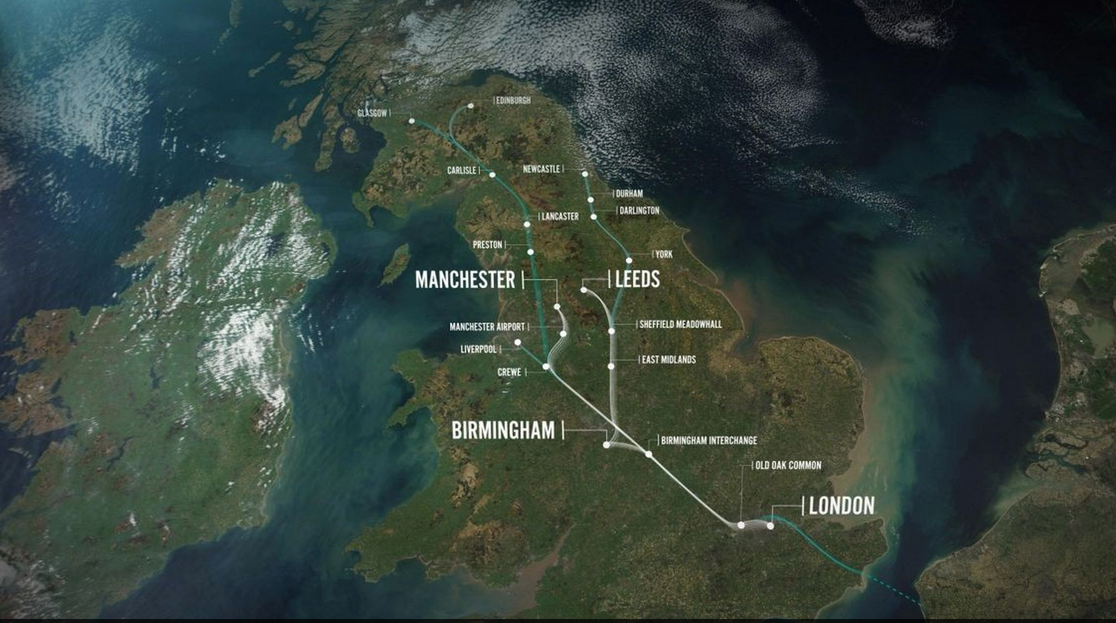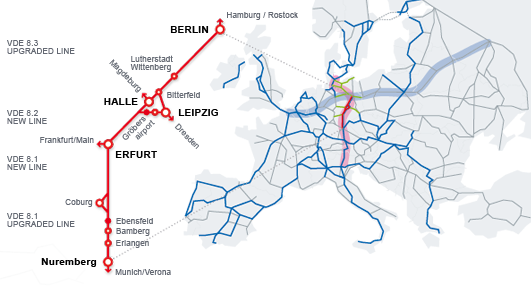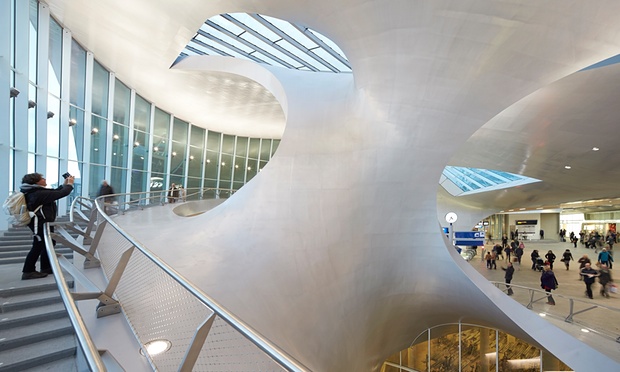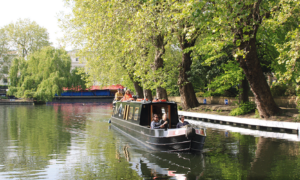There are critics who’ll tell you train travel in Europe is declining … that service isn’t as good, and punctuality and dependability are inferior to the “good old days.”
But Europe is emphatically not moving away from trains. In fact, rail travel will shift into warp drive over the next decade, with ambitious plans to spend billions on new high-speed lines in the United Kingdom, Germany and Sweden, and upgrading and extending existing networks in the Netherlands and other countries.
I used to work for the French SNCF system as a summer intern/translator, and have traveled the length and breadth of Europe on trains. The quality of travel in 2016 compared to the 1980s … there is no comparison, especially for first-class business travelers. But, if you don’t believe me, we consulted an expert on railway engineering and construction. She says this is all about increasing commerce, and increasing user comfort. “These construction projects are worth billions … insanely expensive depending on the scale of project,” the industry source said. “You don’t have European countries do that every day. Even for Sweden, these are monumental.”
A lot of technology is involved in engineering rail beds, tracks and trains and everything else needed for safe service, built to the highest standards to handle the 250-kilometer-plus speeds. When you make such a leap, it’s really a leap for the comfort and travel convenience of passengers, she said. In that vein, the Swedish public relations campaign for their big project stresses, “smoother, faster and safer.”
Our source got deeply into the technical aspects of the rail bed needed for 320 kph high-speed. But simply put, if European countries choose to upgrade existing lines to 180 kph speeds, it will lead to superior service, she said.
“If America had this, you’d think this is amazing, even that standard!”
BRITAIN
The big news is, Great Britain will build high-speed lines – dubbed High Speed 2, or HS2. The 250-mph trains will connect London to its largest cities including Birmingham. Future high-speed lines will connect Birmingham to Manchester and Leeds in a “Y,” according to documents for the U.K.’s Department for Transport. Planned in two phases, the massive project could ultimately connect 18 cities with 250 mph trains. The project is meant to spur productivity and re-balance economic growth around Britain.
 The requests for tender – Americans call them “requests for proposals” – are out, with construction to begin in 2017, and operations projected to begin on the London-Birmingham line in 2026. Connections north to Crewe are scheduled to open in 2027, with lines to Leeds and Manchester due to be completed by 2033. The national headquarters for HS2 opened in Birmingham earlier this month. This is projected to be a very capital-intensive effort, with the London-to-Birmingham line alone estimated at 30 billion pounds. This project is far from a sure thing, with anti-HS2 force rallying behind cost estimates that have increased sharply from when the project was first proposed in 2009.
The requests for tender – Americans call them “requests for proposals” – are out, with construction to begin in 2017, and operations projected to begin on the London-Birmingham line in 2026. Connections north to Crewe are scheduled to open in 2027, with lines to Leeds and Manchester due to be completed by 2033. The national headquarters for HS2 opened in Birmingham earlier this month. This is projected to be a very capital-intensive effort, with the London-to-Birmingham line alone estimated at 30 billion pounds. This project is far from a sure thing, with anti-HS2 force rallying behind cost estimates that have increased sharply from when the project was first proposed in 2009.
If you’re wondering about HS1, it links London to the Channel Tunnel.
GERMANY
The first section of new high-speed rail service – formally “German Unity Transport Project 8” – connecting the old East Germany with the west is in place … the missing link of high-speed line between Leipzig and Ebensfeld that opened last December. This is part of the overall project to connect Munich and Berlin with high-speed trains. (The final section is scheduled to open in December of this year.) This 10 billion euro project was let out to bid in four lots, and this final piece is the biggest lot, according to our sources and GUTP8 documents. It will start operations in December 2016, with passengers able to travel from Berlin to Munich in four hours rather than six hours. An additional advantage is, the service will go city center to city center. So without the delays of driving to the airport, parking, going through airport security, retrieving luggage, then getting a cab from the airport, the new line will be competitive with air travel.
 The upgrade is part of the country’s incremental approach to link Germany’s strategic metropolitan areas, according to Next City, a non-profit that uses journalism and events to improve cities around the world.
The upgrade is part of the country’s incremental approach to link Germany’s strategic metropolitan areas, according to Next City, a non-profit that uses journalism and events to improve cities around the world.
It will be a key link in two broader trans-European corridors: The north-south axis stretching from Italy to Scandinavia, and an east-west axis from Moscow, Minsk and Warsaw leading into Western Europe.
From Next City:
The German city of Erfurt, close to the geographic center of the country, will become a major interchange point on trips between Berlin and Munich, where four high-speed trains from across the country will converge on the half-hour to allow timed, seamless transfers. But the interchange may also represent one reason that Germany high-speed railways have not achieved the same success as their French counterparts: A federalist system that encourages circuitous routes. Erfurt, capital of the Free State of Thuringia, could have been bypassed in favor of a shorter route, which would have allowed non-stop Berlin-Munich trips in just three hours — generally recognized as the outer limit for diverting passengers from air to rail. But Thuringia’s boosters “kicked up a big storm” and managed to turn sleepy Erfurt into a major high-speed rail hub instead.
NETHERLANDS
The Netherlands, meanwhile, is working on becoming the crucial transport link between the economic centers of Germany, Belgium and the Netherlands. Last summer, Dispatches executives saw almost every regional station in the Netherlands including Utrecht and Arnhem under renovation. By last December, the 37.5 million euro Arnhem station was open, a triumph in modernist architecture. By 2020, as many as 110,000 passengers a day are projected to pass through the station.
Sources tell us the Dutch government will spend 1 billion euros to renovate and expand the train station at Schiphol Airport in Amsterdam. All that said, the Netherlands is still smarting after a 2013 debacle that saw Amsterdam-to-Brussels high-speed service fold after only a few months. The Belgian and Dutch governments pulled the plug on the link after new Italian-built trains were plagued with technical problems in their first few months of service.
SWEDEN
Though tendering has not started, Sweden has multiple ambitious projects planned including 150 km of new high-speed railway, 200 bridges and 20 km of tunnels. Sweden Transport Administration officials project the 150-kilometer long Eastern Link from Järna outside Stockholm to Linköping in the center of the country could begin construction in 2017, with the first high-speed trains operational by 2028. The trains would run up to 320 kilometer per hour, according to media reports.
The cost estimates for the high-speed railway are between 20.5 billion euros and 34.6 billion euros at 2015 prices, significantly higher than the 18.4 billion euros originally projected, according to media reports. But the Global Construction Review website states a Chinese construction firm has submitted a much lower proposal. China Railway Construction told Swedish officials they can build the high-speed railway for $3 billion less, and take five less years to do it. “They say of course that they can build the entire Swedish high-speed network in just five years and it’s very interesting for us,” Karin Svensson Smith, Green Party Member of Parliament and chair of Sweden’s Parliamentary Committee on Transport, told SVT, Sweden’s national TV network.
In the future, Swedish officials want to connect Gothenberg on the west coast to the capital Stockholm, 350 kilometers away on the east coast, then Stockholm to Malmö, which is on the southern tip across from Copenhagen. Gothenburg–Borås would be a crucial link in that new high-speed network between Stockholm and Gothenburg/Malmö, with a new rail connection to Göteborg Landvetter Airport and link the region’s two largest cities closer together.
The present railway has a limited capacity with a single track and level crossings. An upgrading will create the necessary potential for sufficiently fast and frequent rail services between the cities, which will be able to compete with road transport and contribute towards regional development. The upgrade will also create a new rail connection to Göteborg Landvetter Airport, Sweden’s second largest airport. Safety will increase and the environment will benefit from the shift of more transportation from road to rail.
Quick Hits:
• Austria’s new high-speed service from Vienna to Salzburg took a while to build, but now you can travel between the two cities in two hours instead of more than four hours.
• France has had the TGV – Train à Grande Vitesse – since 1980. Now, the South Europe Atlantic high-speed project will connect Tours to Bordeaux by next year.
• The Czech Republic is planning to connect Prague and Dresden.
• There’s a nascent plan to connect Western Europe to Scandinavia called Rail Baltica. The proposed 430-mile route would link Finland, Estonia, Latvia, Lithuania and Poland, with an extension reaching down into Germany.
Co-CEO of Dispatches Europe. A former military reporter, I'm a serial expat who has lived in France, Turkey, Germany and the Netherlands.
















